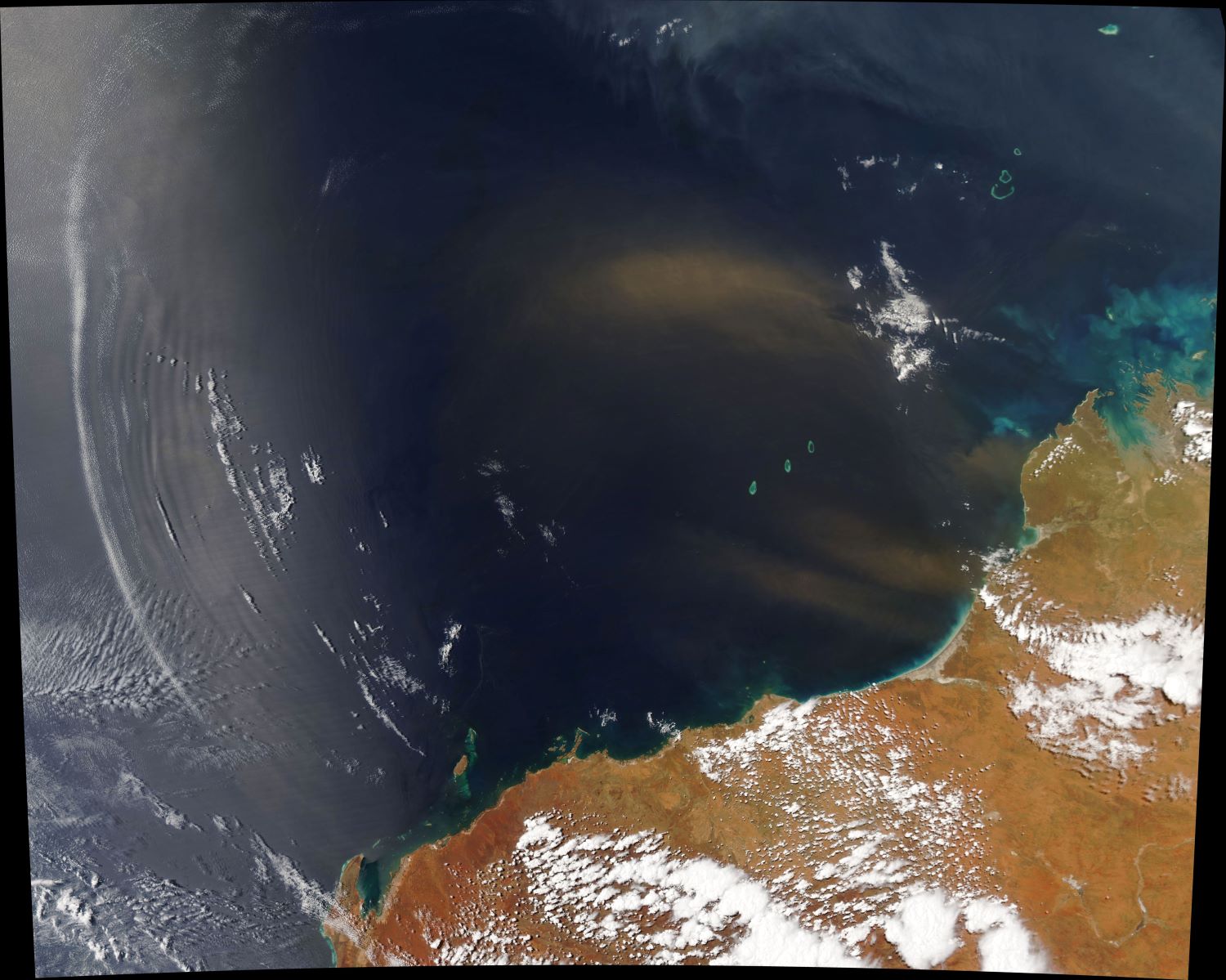[:ja]NASAの地球観測衛星Aquaが撮影した西オーストラリア、インド洋上の大気重力波です。

流体力学における「重力波(gravity wave)」とは、重力の作用によって力学的平衡状態にある媒質が、異なる密度の媒質中に変位したとき、重力を復元力として再び元の平衡状態に戻ろうとする過程で、媒質の界面で発生して界面に沿って進む波動のことです。よく見られる現象として、水面に生じる波浪が挙げられ、これは界面である明瞭な表面を進む波となるため表面波とも呼ばれます。大気中においても同様に波動が発生し、大気重力波と呼ばれます。波状雲はこのような機構で生じる身近で観察できる例ですが、いずれも同じ媒体の内部で伝播する波という意味でこちらは内部波とも呼ばれます。なお、一般相対性理論によって記述される、時空の変位が光速で伝播する現象である「重力波(相対論)」は”gravitational wave”と区別されていますが、日本語では同じ重力波と呼ばれます。
地上の様子はこちらです。

参考文献: A Beautiful Moment Over the Indian Ocean (NASA Earth Observatory)
地球俯瞰画像を見る: LiVEARTH
[Earthview Wonders] No.1194: Atmospheric Gravity Wave🇦🇺
NASA’s Aqua satellite captured the atmospheric gravity wave over the Indian Ocean near western Australia.

In fluid dynamics, gravity waves are waves (different from the gravitational waves, the phenomenon of general relativity) generated in a fluid medium or at the interface between two media when the force of gravity or buoyancy tries to restore equilibrium. An example of such an interface is that between the atmosphere and the ocean, which gives rise to wind waves. Gravity waves on an air?sea interface of the ocean are called surface gravity waves or surface waves, while gravity waves that are within the body of the water (such as between parts of different densities) are called internal waves. Wind-generated waves on the water surface are examples of gravity waves, as are tsunamis and ocean tides.
The local scenery on the ground is as follows.

Reference: A Beautiful Moment Over the Indian Ocean (NASA Earth Observatory)
See earthview photo gallery: LiVEARTH[:]